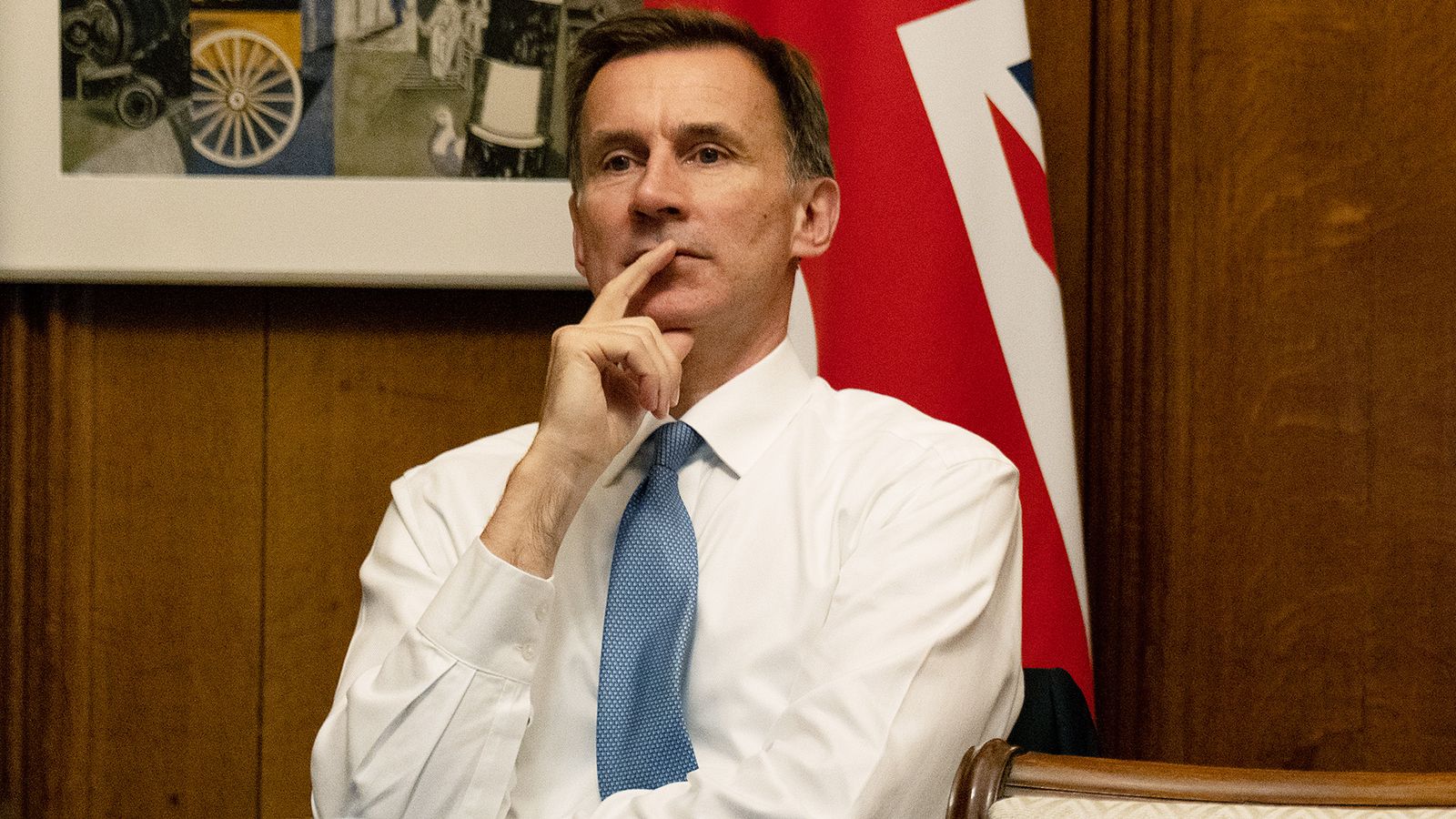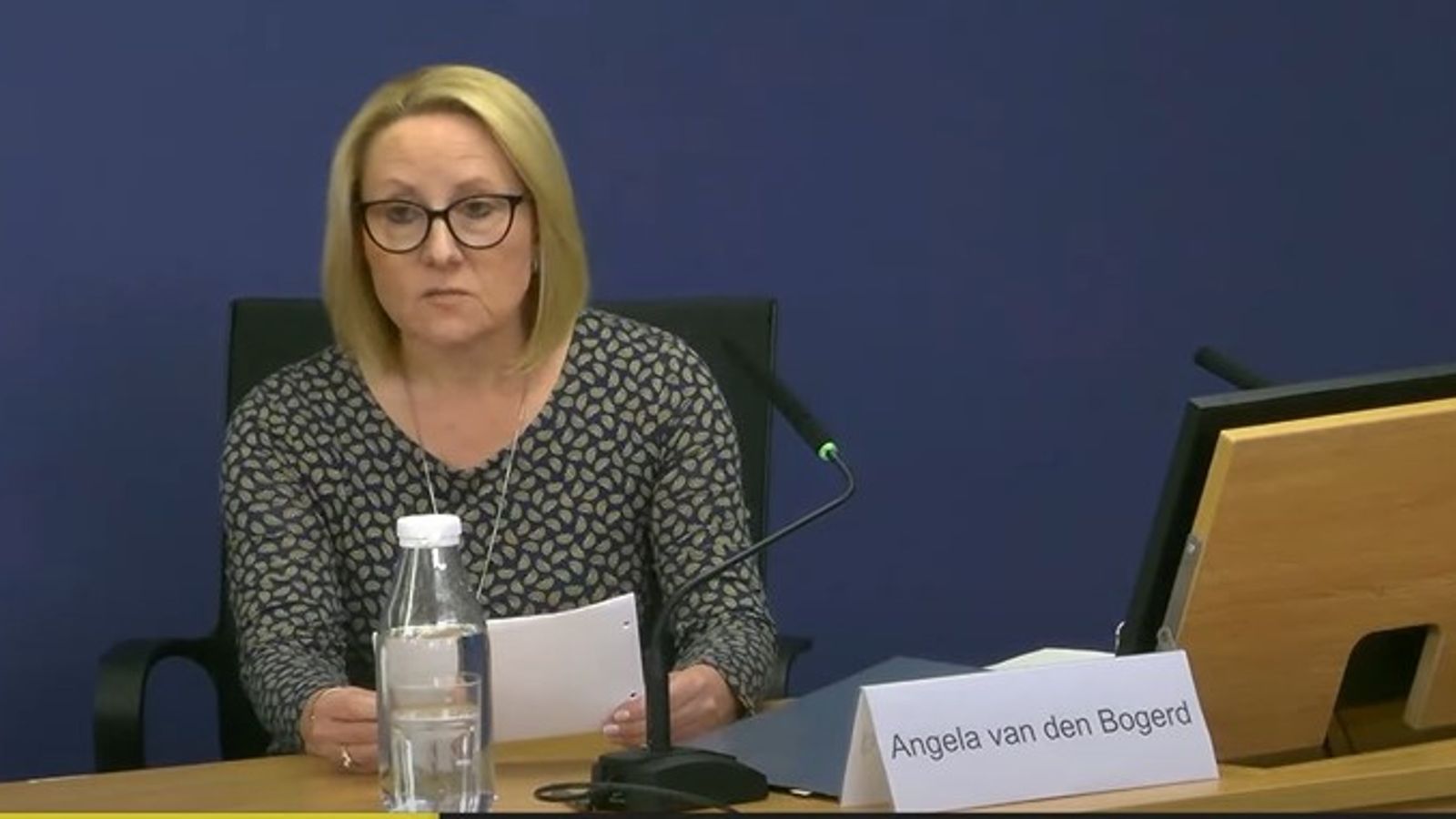
Big financial announcements such as the autumn statement can be jammed with jargon – so we have produced a glossary of some key terms to help you navigate the day.
Chancellor Jeremy Hunt will get to his feet today in the House of Commons to deliver his end of year tyre-kicking of the UK economy.
Here is a helpful list of what some of the things Mr Hunt will talk about mean.
Fiscal headroom
Fiscal headroom is the amount by which government can increase spending or cut taxes without breaking its own fiscal rules – in this case, to have national debt falling as a percentage of national debt within five years.
This government’s fiscal headroom is judged to be low.
This means there is not much manoeuvrability for Mr Hunt and Rishi Sunak to make sweeping tax changes or announce a bout of heavy spending.
Income tax thresholds
Income tax thresholds are the level of income at which people start paying tax – or begin paying higher rates of tax, and this is what they currently look like:
Fiscal drag
Fiscal drag occurs when pay goes up, but tax thresholds don’t – dragging people into paying more tax.
We in the UK have experienced this because the chancellor froze income tax thresholds until 2028 in his last autumn statement (he actually reduced the threshold for the highest earners).
Increasing tax thresholds to negate fiscal drag would cost the Treasury a lot in lost tax revenue, but would mean earners actually feel the benefit of a pay rise in the midst of the cost of living crisis.
Tax burden
Simply put, the tax burden is a measurement of the weight of tax on a country’s population.
While the UK’s tax burden stands up pretty well compared with much of Europe, it has risen sharply – with tax revenue this financial year as a share of gross domestic product forecast to reach 37%, up from around 33% before the pandemic and the highest since 1948.
VAT
Value Added Tax (VAT) is tax paid on most goods and services sold in the UK and around the world. There are three rates of VAT in the UK – standard (20%), reduced (5%), and zero-rated (0%).
You pay standard rate on basically everything – unless the government deems it necessary to reduce or eliminate the tax to encourage more spending on it, such as children’s car seats to incentivise parents to buy them.
Inheritance tax
Inheritance tax is a tax on someone’s “estate” when they die – ie a tax on any money, possessions or property left behind.
There is no tax if you leave your estate to your spouse or civil partner, or an exempt charity or group.
The tax is currently charged at 40% – but only on the part of the estate that is valued above £325,000. For example, if someone’s estate is worth £400,000 when they die, then £75,000 of that estate would be taxed at 40% (£33,750 total tax).
The threshold increases to £500,000 if you pass your estate to direct descendants and carries over for couples – meaning a joint estate is taxed at a threshold of £1m once both parents or carers die.
Given it is estimated to only affect around 4% of deaths, there are concerns in Westminster that reducing inheritance tax could be viewed as a handout to the rich during a cost of living crisis, although cutting it would be popular among the right of the Conservative party and among some of its voters.
Some commentators have pointed to the fact Mr Sunak and his family would likely benefit from the cutting or scrapping of inheritance tax, as their estates are estimated to be well above the threshold.
Corporation tax
Most businesses must pay corporation tax on trading profits, investments and on the sale of assets above their cost price.
The chancellor hiked it from 19% to 25% last year for companies with over £250,000 in profits in his autumn statement.
The hike was first announced in 2021 (when Mr Sunak was chancellor) and was scrapped by Liz Truss and her chancellor Kwasi Kwarteng. Ms Truss then spectacularly u-turned and reintroduced it after Mr Kwarteng was sacked.
Read more:
Autumn statement 2023: What time is it?
Sunak promises to cut taxes
Hunt eyes benefits squeeze to help slash inheritance tax
Capital gains tax
Capital gains tax is a tax on the profit when you sell an asset that’s increased in value – for example, shares and investments, or property that’s not your main home.
Here’s how it works based on how much you earn:
Alcohol duty
The duty is a tax on – you guessed it – alcohol.
The higher the alcohol per volume (ABV), the higher the duty rate is, although draught products see their duty cut to encourage pubs to drop prices of pints – you can check out this table below to see what this looks like in practice:
The chancellor made the decision to change the duties earlier this year – higher on spirits and lower on draught beer and cider. A number of reports suggested those changes are costing the Treasury.
Click to subscribe to Politics at Jack and Sam’s wherever you get your podcasts
National insurance
National insurance (NI) is a tax paid that qualifies you for certain benefits – such as a state pension, maternity or job-seeker’s allowance.
You do not pay any NI on the first £12,571 you earn each year, but as soon as you go over that threshold, you’re charged at 12% on earnings up to £50,271, and 2% on anything you make above that.
There are widespread reports that the chancellor is considering cutting Class 4 NI contributions for the self-employed – currently at 9% for profits between £12,570 and £50,270.








